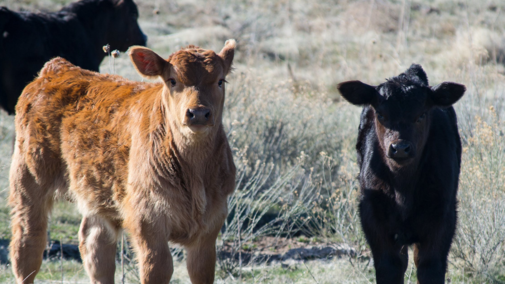2023 Nebraska Grazing Conference
Make plans now to attend the 2023 Nebraska Grazing Conference in Kearney at the Younes Convention Center on August 8 and 9.
A field tour kicks off the conference on Tuesday, August 8 from 9:30 to 11:30 am south of Gibbon, NE. Stress-free Livestock Management topics include handling cattle on pasture and using a portable corral system. There is no fee to attend the field tour.
We are honored to have Sherry Vinton, Director of the Nebraska Department of Agriculture, open the conference and speak about the Role of Nebraska’s Grazing Lands.
Sessions on Tuesday afternoon include several former Leopold Conservation Award winners who will provide an assessment of their past, present, and future grazing land conservation efforts. Other speakers will address emerging issues in grazing lands management.
On Tuesday evening, we will host a banquet with Curt Pate as the featured speaker. Curt is passionate about using grazing animals to improve the environment.
The conference will conclude on Wednesday, August 9 with a session devoted to Precision Livestock Management.
Sponsor and exhibitor booths will showcase new programs, equipment, and products to conference participants.
More specific info on the field tour and conference is available on the website of the Center for Grassland Studies.
We look forward to seeing you on August 8 and 9 at the Younes Convention Center in Kearney, NE!
Harvesting Summer Annual Forages
Putting up good quality hay from summer annual grasses like sorghum-sudan hybrids, pearl millet, and forage sorghums can be tricky. Here are some tips to help make sure these hays are of good quality and dry, so it won’t heat or mold.
Nearly all problems making good summer annual grass or cane hay are caused by their stems. Stems are low in protein and energy, slow to dry, and the lower stems could contain potentially toxic nitrates.
There usually is a wide range of spring and early summer planting dates for these annuals, but cutting early before plants become excessively tall is important. When cut at about 4 feet in height; stems are smaller, eaten more readily, and the hay contains more protein and energy. Also, there is less plant volume. So, with smaller stems and fewer of them, the hay will dry quicker. Although you will have less tonnage when cutting early, you are creating more days for regrowth and a good second cutting.
Regardless of when you harvest though, cut it high, leaving eight to ten inches of stubble. Tall stubble pays off three ways: it helps plants begin regrowth quicker; it holds hay off the ground so air can help dry underneath; and it keeps many nitrates out in the field stubble rather than harvesting them all in your hay.
And finally, always crimp the hay. Even when stems are small, the waxy coating on the stems cause slow drying. But if you break open these stems by crimping, water will be able to escape and evaporate more quickly.
So cut it early, cut it high, crimp the stems and they will dry.
Pricing CRP Hay
There have been some questions recently about how to price Conservation Reserve Program or CRP hay.
CRP is a federally funded voluntary program that contracts with agricultural producers so that environmentally sensitive agricultural land is not farmed or ranched. Participants establish long-term, resource conserving plant species, such as approved grasses or trees known as “covers.
There are two ways to hay CRP land either via emergency authorization or a non-emergency haying and grazing option. In general, non-emergency haying may be done every two years, But may reduce annual CRP government payments.
After we clear the hurdle of harvesting CRP land for hay, the next question to arise is how to price the hay either for your own use or for sale. In this case knowing the quality of hay can help producers get a better idea of the forage market value. Hay quality can affect the bottom line and/or have negative consequences for herd health and fertility.
Once a producer has an idea of the quality of forage there are multiple sources to get an idea of going rates for your hay, such as hay auctions (broken down by region and type of hay), as well as the USDA weekly hay report for Nebraska. If you are feeding your hay to your cattle, the Nebraska farm custom rates report at cap.unl.edu calculates the costs of haying. The value of standing forage can be evaluated using the UNL Standing Forage Excel Tool. Finally, the UNL Feed Cost Cow-q-lator can help calculate costs within a ration. Knowing the forage quality is helpful whether you are feeding your own livestock or planning to sell it.

